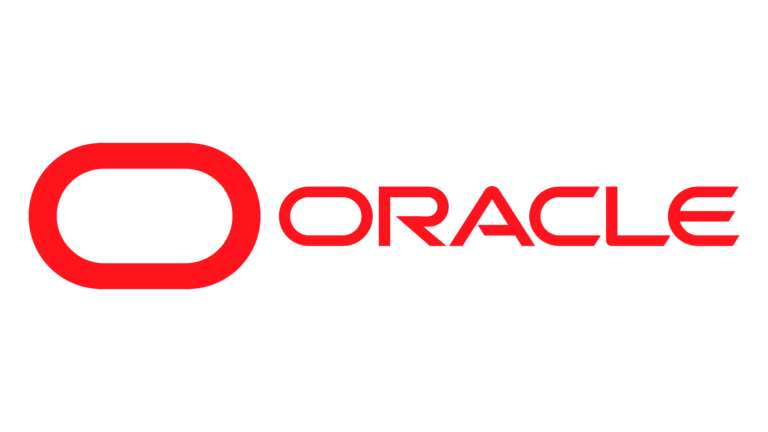
 Comparison: Oracle vs PostgreSQL
Comparison: Oracle vs PostgreSQL
 Comparison: Oracle vs PostgreSQL
Comparison: Oracle vs PostgreSQLModified date: Monday, June 30, 2025
| Feature | Oracle | PostgreSQL | Definition |
|---|---|---|---|
| intro | Oracle Database is a DBMS developed by Oracle Corporation. | PostgreSQL is a powerful, open source object-relational database system with over 35 years of active development that has earned it a strong reputation for reliability, feature robustness, and performance. | |
| vendor | Oracle | PostgreSQL Committees | |
| initial release | 1980 | 1998 | |
| latested version | 23ai | 17 | |
| supported platforms | Windows, Linux, Solaris, HP-UX, AIX, z/OS | x86, PowerPC, S/390, SPARC, ARM, MIPS, RISC-V, and PA-RISC | |
| db-engines ranking | 1 | 4 | |
| relational? | yes | yes | |
| open source? | no | yes | |
| license | commercial | ||
| on-premise offering | yes | yes | |
| cloud offering | Oracle Cloud and other cloud vendors | cloud vendors | |
| technical doc | https://docs.oracle.com/en/database/ | www.postgresql.org/docs | |
| price: box software | 0 |
| Feature | Oracle | PostgreSQL | Definition |
|---|---|---|---|
| int: 4-bytes int name | int | int | |
| char(n): max bytes | 2000 | 10,485,760 | |
| BLOB: max size | |||
| JSON: max size | 32MB | ||
| Literal: max size | 4000 | ||
| int: signess | signed only | ||
| int: 1-bytes int name | n.a. | ||
| int: 2-bytes int name | smallint | ||
| int: 3-bytes int name | n.a. | ||
| int: 8-bytes int name | bigint | ||
| decimal: storage size | variable | ||
| decimal: range | up to 131072 digits before the decimal point; up to 16383 digits after the decimal point | ||
| text: max bytes | 1G |
| Feature | Oracle | PostgreSQL | Definition |
|---|---|---|---|
| SQL: standard complaince | high | high | |
| max SQL length | |||
| PL: main | SQL + PL/SQL | SQL + PL/PgSQL | |
| PL: other language support | yes | yes | |
| SQL: query hints | complete | GUC only | |
| SQL: explicit locking | yes | yes: row, page, table level | |
| Triggers? | yes | yes | |
| Object-Relational? | some | yes | |
| SP: max parameters | 100 | ||
| UDF: max parameters | 100 | ||
| SQL: max parameters | 65535 | ||
| Triggers: scope | tables, views, foreign tables | ||
| Triggers: type | BEFORE, AFTER, INSTEAD OF | ||
| Extension Mechanism | C programming, link with engine | ||
| vector search | no native |
| Feature | Oracle | PostgreSQL | Definition |
|---|---|---|---|
| arch: server | C/S | C/S | |
| arch: run in browser? | no | no/yes | |
| arch: clustering/HA | RAC, Data Guard | ||
| arch: in-memory support | Oracle Database In-Memory option | no | |
| arch: Multi-master support? | yes | no | |
| arch: primary/read replica? | yes | yes | |
| replication: sync/async | both | both | |
| replication: WAL shipping | yes | yes | |
| sessions: max | 262143 | ||
| tables: max number per database | undefined | 1,431,650,303 | |
| tables: max number of columns | 4096 | ||
| contraints: max per column | undefined | ||
| partitions: methods | Range, List, Hash, Composite (sub-partitions supported). | Range, List, Hash; limited composite (multi-level partitioning more limited than Oracle/SQL Server). | |
| partitions: global index | yes | no | |
| constraints: max per database | 4,294,967,293 | ||
| rows: max rows per table | undefined | 32T/row_size | |
| index: max allowed index | undefined | rows per table is restricted by the number of rows that can fit onto MAX_UINT*8K pages. | |
| index: max allowable size | 6400 | ||
| index: max number of fields | 32 | ||
| partition: max allowed partitions | 1M-1 | ||
| partition: max allowed key columns | 16 | ||
| partition: max number of subpartitions | 1M-1 | ||
| ACID | yes/yes | yes/yes | |
| ACID: max isolation level | |||
| ACID: max ANSI isolation level | Serializable | Serializable | |
| ACID: durability | yes | yes | |
| Materialized View: support? | yes | yes | |
| replication: quorum-based commit | no | ||
| database: max number |
| Feature | Oracle | PostgreSQL | Definition |
|---|---|---|---|
| any official TPC benchmarks? | yes | no | |
| TPCC: most recent tpmC | |||
| TPCC: most recent submit date | 3/26/2013 | ||
| TPCC: most recent per thread perf | 8352 | ||
| TPCC: best tpmC | |||
| TPCC: best perf submit date | 12/2/2010 | ||
| TPCC: best perf per thread perf | 2188 |
| Feature | Oracle | PostgreSQL | Definition |
|---|---|---|---|
| command line client | psql | ||
| admin(GUI) | pgAdmin |
| Feature | Oracle | PostgreSQL | Definition |
|---|---|---|---|
| Jurisdiction | US | US | |
| ECCN | 5D992.c | None | |
| Eligible License Exception / CCATS | Not required | ||
| Encryption Components | TDE, SSL | SSL |
| Feature | Oracle | PostgreSQL | Definition |
|---|---|---|---|
| concurrency control | MVCC | MVCC | |
| MVCC: implemented? | yes | yes | |
| MVCC: rollback segment | yes | no | |
| Implementation language | C | C |
| Feature | Oracle | PostgreSQL | Definition |
|---|---|---|---|
| CBO? | yes | yes | |
| framework | System-R | System-R | |
| query hints? | complete | GUC only | |
| join order search | dynamic programming + Generic Algorithm (GEQO) | ||
| stats: multi column | yes | ||
| plan guide? | no |
| Feature | Oracle | PostgreSQL | Definition |
|---|---|---|---|
| resource management | complete | simple: work_mem controls per-operator memory use | |
| support intra-parallel query? | yes | yes | |
| vectorization | yes | no native | |
| iterator: join methods | all 3 | all 3 | |
| spilling support | yes | ||
| model | Volcano + push for parallel run | ||
| adaptive execution (AQP)? | no | ||
| Error: out-of-range and overflow | abort the transaction |
| Feature | Oracle | PostgreSQL | Definition |
|---|---|---|---|
| Page Size | 2K-32K | 8K default | |
| partition table | complete | declarative partition table is implemented via inheritance table, since V11 | |
| partition table: prunning | both | mostly at compile time, some runtime | |
| ACID: durability mechanism | WAL | WAL | |
| Storage Compression | TOAST compression (within a row) | ||
| Row Overflow / Large Row Handling | Row within a page and large columns pointing to TOAST storage | ||
| Index: primary cluster | Heap storage by default; CLUSTER command for static clustering - if modification happens after, order is not maintained. | ||
| Index: secondary | B+Tree, GIN, GiST, SP-GiST, BRIN, Hash, Fulltext (via extensions). | ||
| index: column store as primary | No native support; available via extensions (e.g. cstore_fdw, citus). | ||
| index: column store as secondary | No native support; available via extensions (e.g. cstore_fdw, citus). |